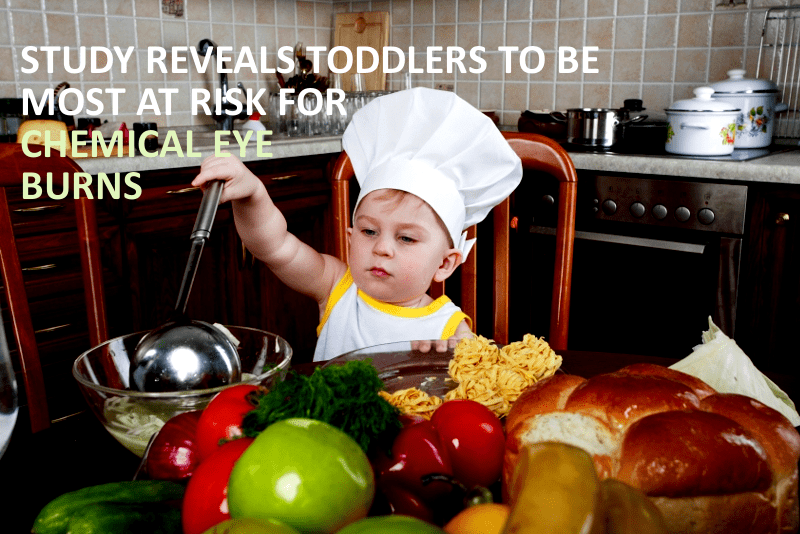
According to worrying new research published by Jama Opthalmology, young children between the ages of 1-2 are the worst victims of eye damage caused by chemical burns. In fact, toddlers are 13 times more at risk than even a 7-year-old.
Chemical burns leave a grievous impact on eyesight because the corrosive agents can continue to burn into the eye after contact, causing permanent vision damage.
This new finding comes as a surprise for the eye health industry because the commonly-held premise for so long had been that young working adults reported most cases of chemical burns to the eye in the United States, on account of various work-related injuries.
The researchers studied four years of accumulated data from more than 900 emergency rooms spread across the United States. They found more than 144,000 ER visits related to chemical eye burns nationwide between 2010 and 2013. And the injuries mostly occurred – not in the factories and other workplaces, but at home.
“These are terrible injuries; they occur most frequently in the smallest of children and they are entirely preventable,” says study leader R. Sterling Haring, DO, MPH, of the Johns Hopkins University Bloomberg School of Public Health. “These children do not deal with chemicals on the job. They are injured largely because they get into chemicals such as household cleaners that are improperly stored.”
As household cleaners are constantly in use, especially when there are little kids and pets at home, parents tend to forget to store them carefully out of reach. This small carelessness can have serious consequences when a toddler is attracted to a brightly-colored spray bottle full of harmful liquid. “Chemical burn accidents can occur in an instant,” warns Dr. Haring. Even if you have noticed your child is picking up or playing with a bottle, the toggle on top can be pressed before you can react or take it away from the child’s hand.
A good safety practice is to put a lock on the cleaning supplies cabinet or store household cleaners on a high, closed shelf when there are toddlers about. However, if an accident does happen, here are the immediate first aid steps you should take while waiting for medical help:
- Rinse the eye out immediately under a faucet.
- Position the face so that the affected eye is down and to the side. Do not spray water directly into the eye.
- Keep the eyelids open as wide as possible.
- Continue flushing for 15-30 minutes until you can get medical help.
- If there is light sensitivity, try to keep the child’s eyes closed until you reach your doctor.
- Make sure you know what chemical got into the eye, so treatment can begin immediately.
